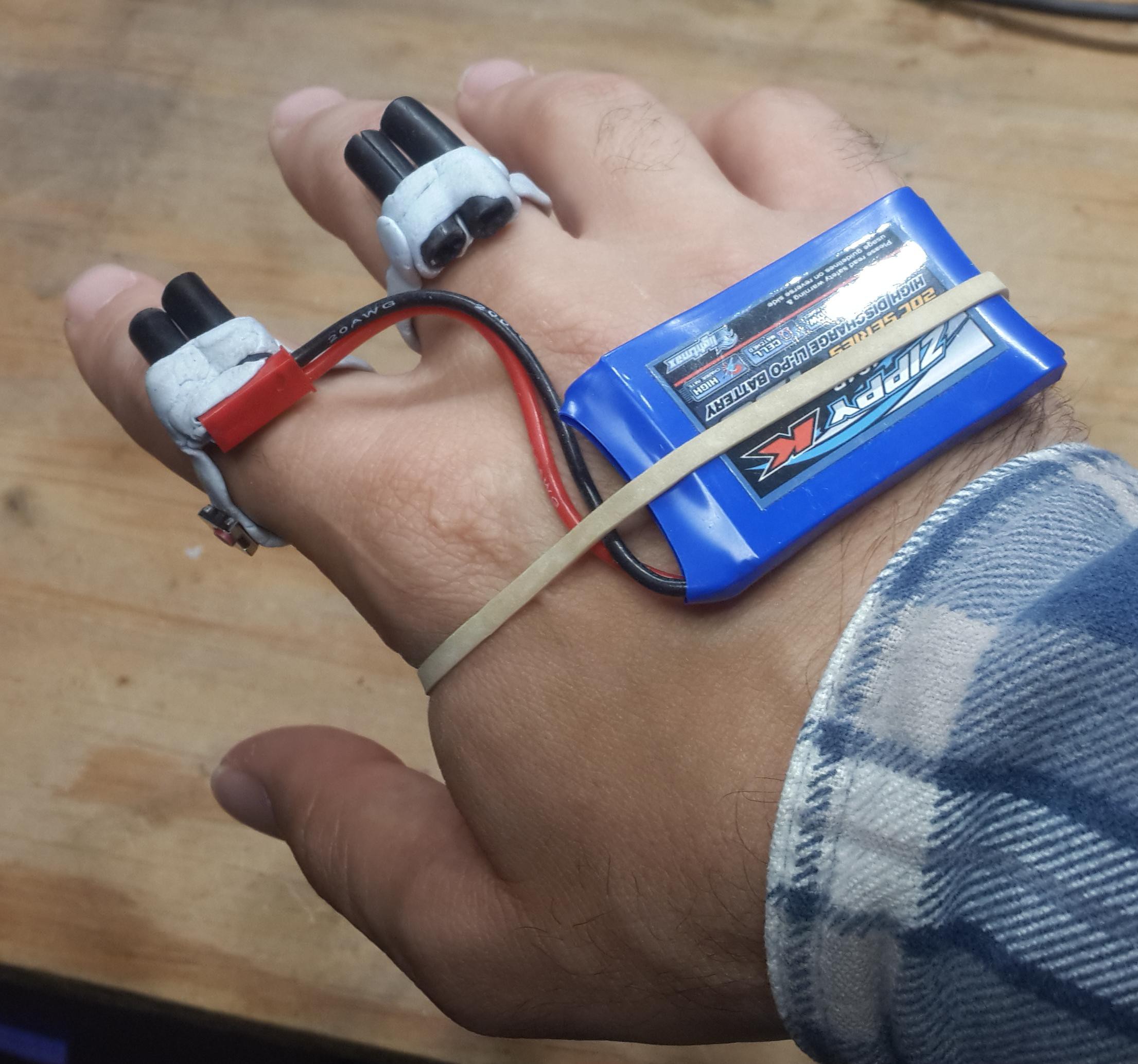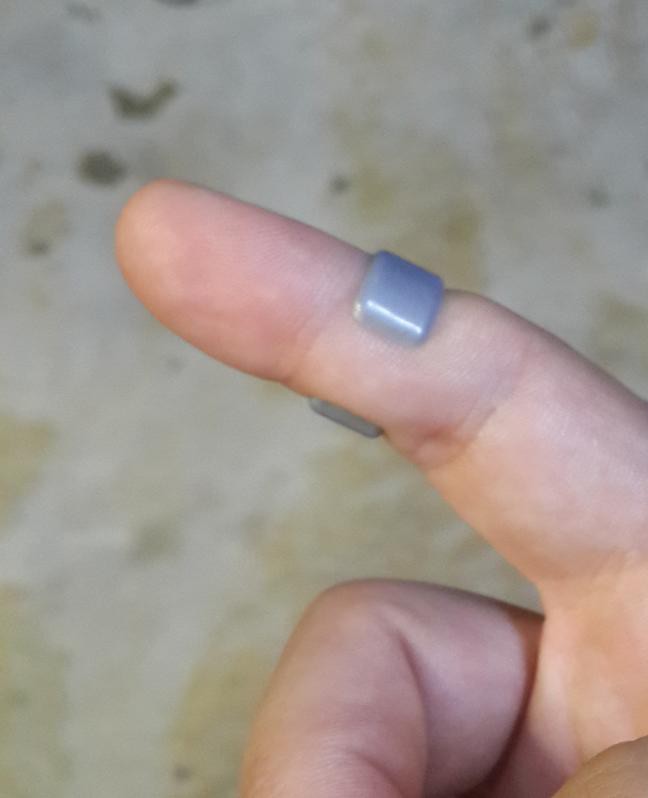I created an initial mockup showing roughly how I intend the device to be used. It has 2 finger attachments so you get 2 distance measurements at the same time. By using 2 (or 3 or 4) at the same time, it lets the user sweep their hand across once and already get an idea of how tall some objects are, and allows to detect objects faster, since the user doesn't need to sweep multiple times to get distances at different heights, they can sweep their hand once to get data at multiple heights.

There's a very small pushbutton on the index finger. The device will normally not do anything, and will only be on while the user is holding that button. This allows the device to have significantly longer battery life, since electricity will only be used when the user actually wants to scan an area. I've considered the idea of getting the device to automatically turn on by itself, but I think it's better to give the user the control.
The mockup doesn't show it, but there would be a tiny vibration motor (similar to a smartphone vibration motor) on the back of each finger attachment, so that each finger can sense its own distance and also to relay the distance back to the user.
It's easy to think this device should be built as a smart glove, but I see 2 problems with making it a glove:
- When you consider that 90% of blind people are in the 3rd world, and most of the 3rd world is very hot & humid, I assume a glove is not the ideal solution for these hot & humid countries. An open-glove would be better, but I believe it can be even better by just being a small device attached to the wrist, not covering up much of the hand at all.
- It's important that the user can feel the vibration motors fairly well. If the vibration motors are in a glove that is loosely fitting, then the vibration motors might not be touching the user's fingers much, and so the user wouldn't feel the vibration properly and won't get the proper feedback. So either the glove should be tight on the fingers, or instead of a glove, something like a ring or open-cut ring (shown in the photo below) could be used to make sure the vibration motor sends the feedback quite clearly to each finger.

The microcontroller & battery could potentially be placed on the back of the wrist, just like how you would wear a watch or smartwatch. But then it needs fairly long wires between the microcontroller and the finger attachments, and that means the wire is going to get caught on things more often. So in the mockup I'm attempting to place the microcontroller & battery closer to the fingers, so the wires to the finger attachments can be much shorter and less likely to wrap around objects.
 Shervin Emami
Shervin Emami
Discussions
Become a Hackaday.io Member
Create an account to leave a comment. Already have an account? Log In.